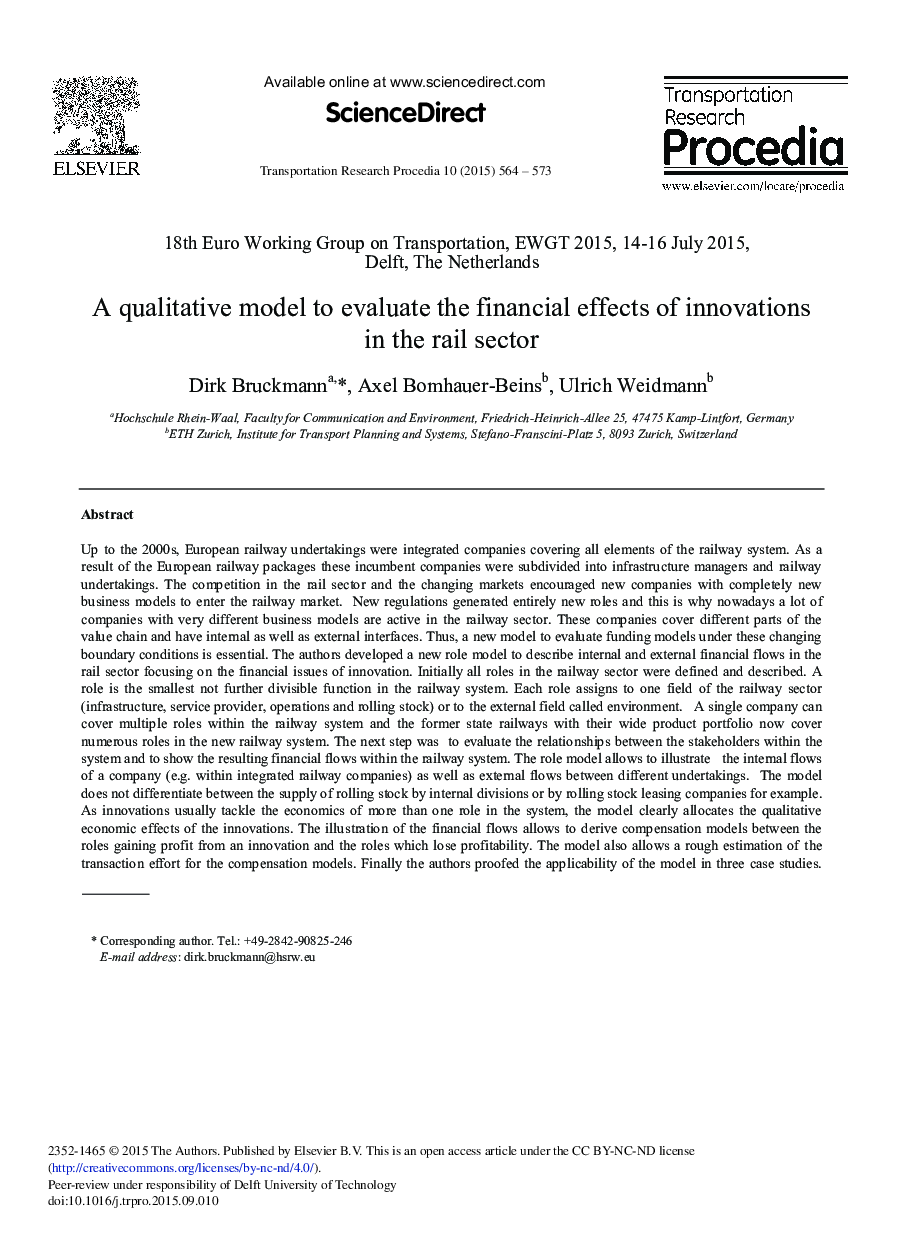| Article ID | Journal | Published Year | Pages | File Type |
|---|---|---|---|---|
| 1106867 | Transportation Research Procedia | 2015 | 10 Pages |
Up to the 2000s, European railway undertakings were integrated companies covering all elements of the railway system. As a result of the European railway packages these incumbent companies were subdivided into infrastructure managers and railway undertakings. The competition in the rail sector and the changing markets encouraged new companies with completely new business models to enter the railway market. New regulations generated entirely new roles and this is why nowadays a lot of companies with very different business models are active in the railway sector. These companies cover different parts of the value chain and have internal as well as external interfaces. Thus, a new model to evaluate funding models under these changing boundary conditions is essential. The authors developed a new role model to describe internal and external financial flows in the rail sector focusing on the financial issues of innovation. Initially all roles in the railway sector were defined and described. A role is the smallest not further divisible function in the railway system. Each role assigns to one field of the railway sector (infrastructure, service provider, operations and rolling stock) or to the external field called environment. A single company can cover multiple roles within the railway system and the former state railways with their wide product portfolio now cover numerous roles in the new railway system. The next step was to evaluate the relationships between the stakeholders within the system and to show the resulting financial flows within the railway system. The role model allows to illustrate the internal flows of a company (e.g. within integrated railway companies) as well as external flows between different undertakings. The model does not differentiate between the supply of rolling stock by internal divisions or by rolling stock leasing companies for example. As innovations usually tackle the economics of more than one role in the system, the model clearly allocates the qualitative economic effects of the innovations. The illustration of the financial flows allows to derive compensation models between the roles gaining profit from an innovation and the roles which lose profitability. The model also allows a rough estimation of the transaction effort for the compensation models. Finally the authors proofed the applicability of the model in three case studies. These case studies demonstrated that one of the mayor obstacles for innovation in the railway system are the missing direct financial flows between infrastructure and rolling stock.
